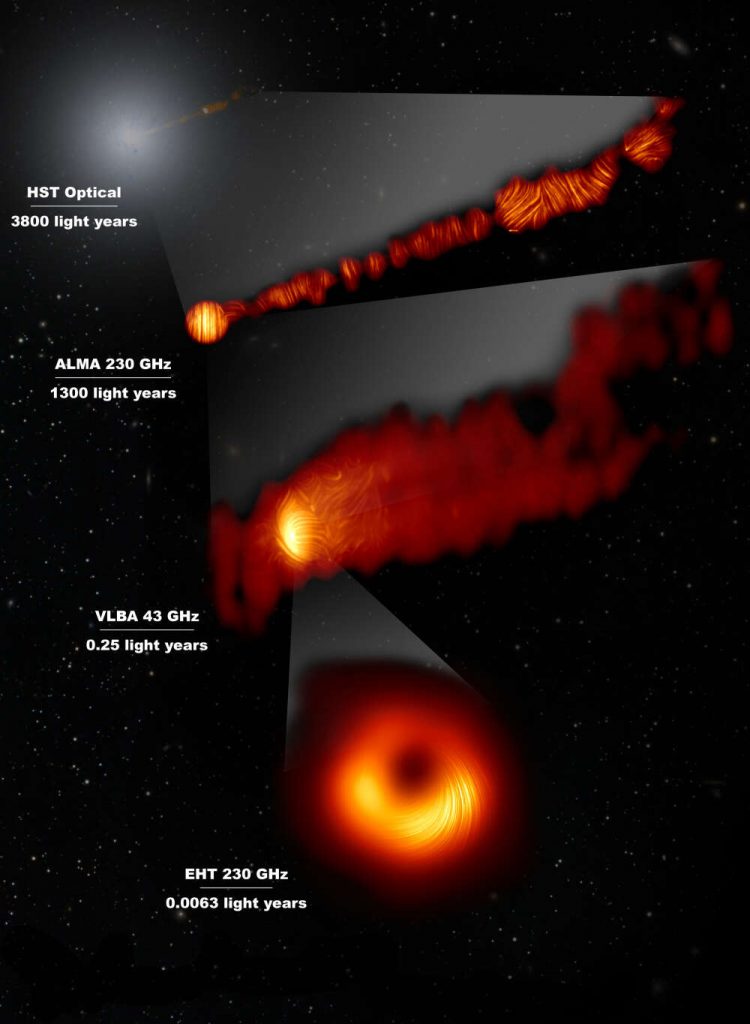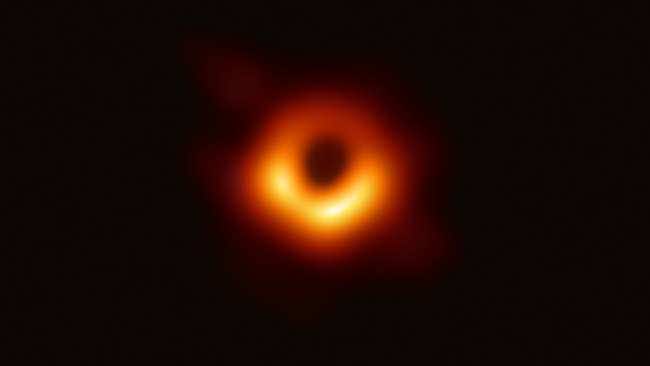Black holes are one of the wonders of space. A clump of space where the gravity is so strong that nothing can escape from it not even light. Thus forming a black region in space. The first-ever pictures of a black hole were published about two years ago though it only showed the event horizon of the black hole.
Now the same researchers who published those pictures two years ago have added new and important details to that image. A team from the Event Horizon Telescope or EHT collaboration measured the magnetic field around the edge of that black hole. This is a historic event never before done in the history of space exploration.
The study was detailed in two papers in The Astrophysical Journal Letters. Astronomers discovered that a large portion of light around the black hole of galaxy M87 is polarized. In the study, they described how they used this recently discovered polarization of light to study its magnetic field.

Light usually gets polarized while passing through certain materials or filters. The most common example would sunglasses. When light is polarized it is mostly oscillating in a specific direction and not randomly like unpolarized light. Magnetic fields can influence the direction in which light oscillates and that’s just what these researchers discovered.
Dr. Ivan Marti-Vidal, one of the coordinators of the EHT Polarimetry Working group said in a statement that “This work is a major milestone: the polarisation of light carries information that allows us to better understand the physics behind the image we saw in April 2019, which was not possible before”. He further goes on to say that “[U]nveiling this new polarised-light image required years of work due to the complex techniques involved in obtaining and analyzing the data.”

Another Professor, Monika Mo?cibrodzka, said that “We are now seeing the next crucial piece of evidence to understand how magnetic fields behave around black holes, and how activity in this very compact region of space can drive powerful jets that extend far beyond the galaxy”. The team also estimated that mass equal to 666 Earths (coincidence? I think not) falls into the black hole every year.
The EHT connects around eight ground-based radio telescopes across the surface of Earth to act as an Earth-sized radio observatory designed to capture images of a black hole. There are plans to include even more telescopes in its next Iteration.


